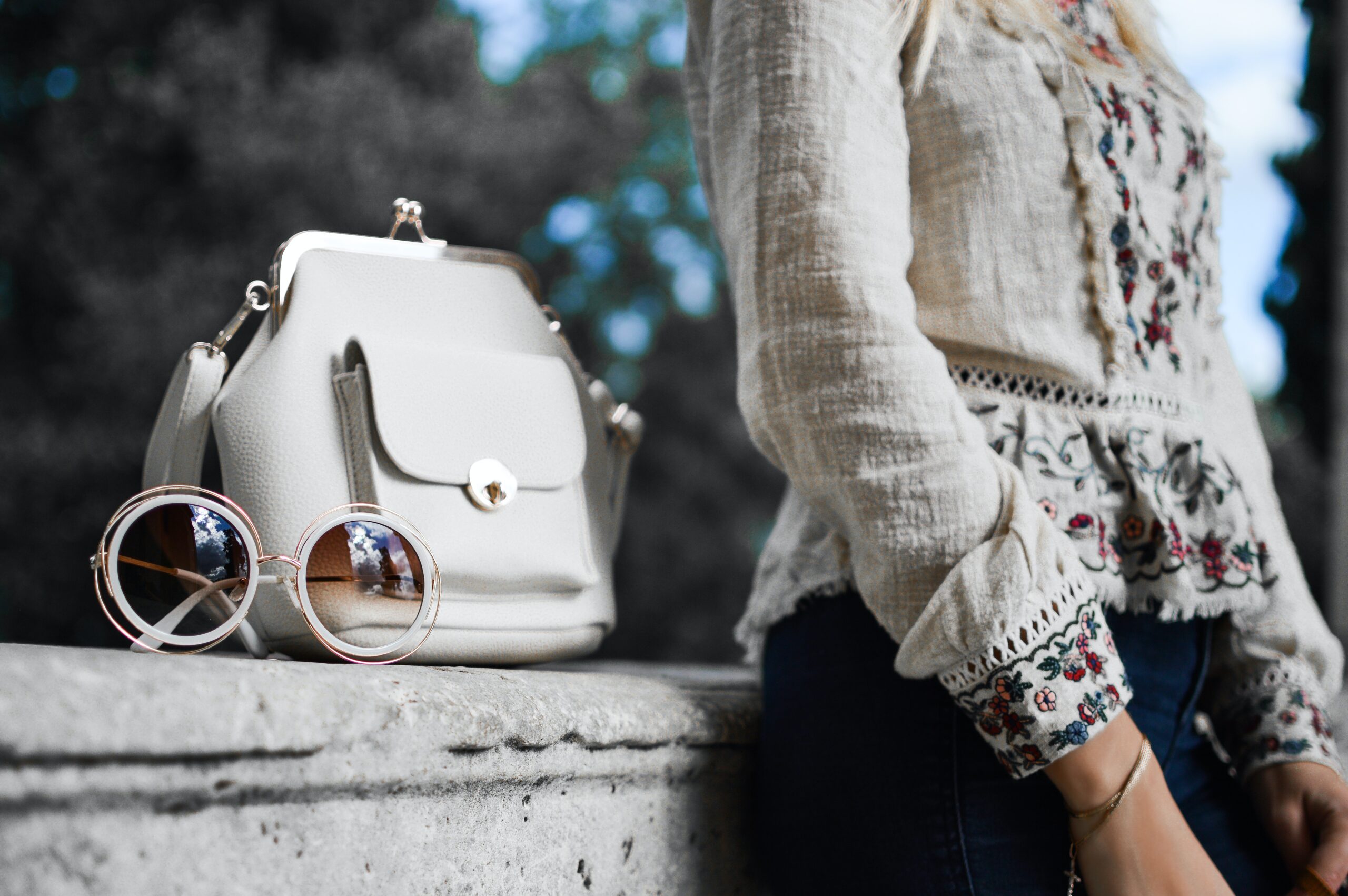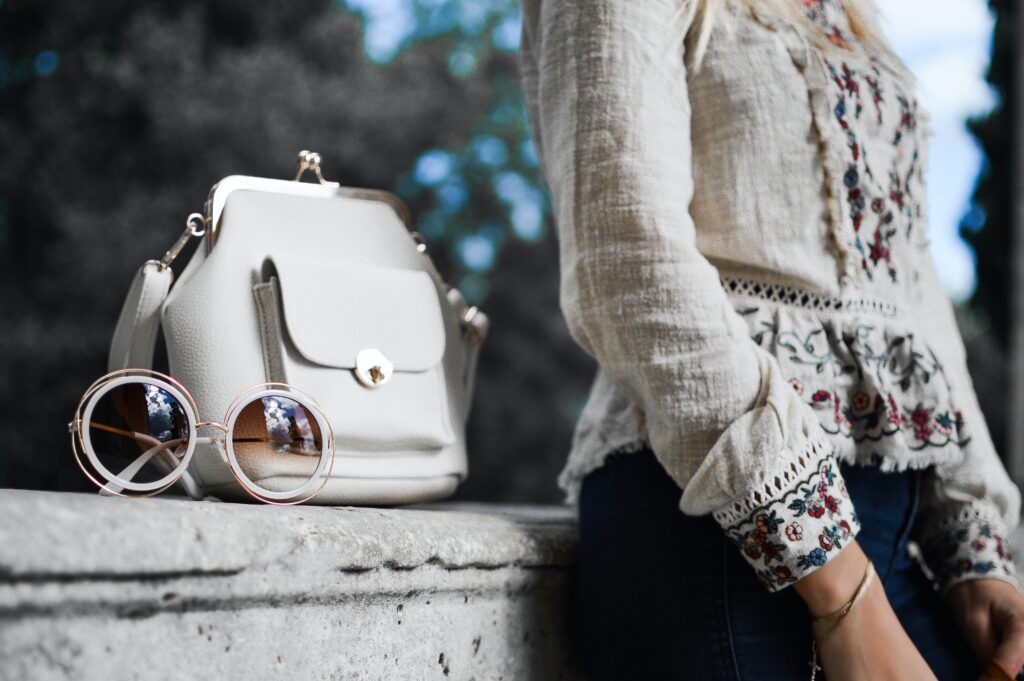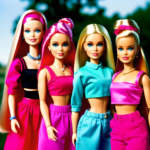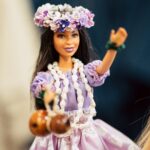
Barbie, the iconic doll that has captured the hearts and imagination of millions, has become more than just a toy. With her impeccable style, unattainable proportions, and vast range of careers, Barbie has influenced popular culture and society in ways that are far-reaching. From her early inception in 1959 to present day, Barbie has shaped trends, challenged beauty standards, and even sparked debates. This article takes a closer look at how Barbie continues to impact our culture, examining her influence on body image, gender roles, and the toy industry.

This image is property of images.unsplash.com.
Image of Barbie in Popular Culture
Iconic status of Barbie
Barbie, the iconic doll created by Ruth Handler in 1959, has become a symbol of popular culture worldwide. With her signature blonde hair, slender figure, and glamorous outfits, Barbie has captured the hearts of millions of children and adults alike. Her iconic status is evident in the numerous Barbie dolls that have been produced over the years, as well as the wide range of merchandise, movies, and TV shows featuring her. Barbie is not just a doll; she represents an entire lifestyle and has become a cultural icon.
Barbie as a symbol of beauty
One of the key reasons behind Barbie’s enduring popularity is her portrayal of beauty. With her flawless features and fashionable clothing, she embodies the idealized version of femininity that many aspire to. Barbie has had a profound influence on societal beauty standards, shaping the way people perceive beauty and attractiveness. Her image has become deeply ingrained in popular culture and has influenced the fashion and beauty industry in significant ways.
Influence on fashion and beauty industry
Barbie’s influence on the fashion and beauty industry cannot be overstated. Her stylish outfits and accessories have inspired countless designers and fashion trends. Barbie has not only showcased the latest fashion trends but has also played a part in creating them. From the iconic pink convertible to the endless wardrobe options, Barbie has introduced generations of children to the world of fashion, encouraging creativity and self-expression.
Body Image and Beauty Ideals
Unattainable body proportions
One of the most debated aspects of Barbie’s image is her body proportions, which many argue are unrealistic and unattainable. With her impossibly long legs, tiny waist, and large bust, Barbie’s body shape has faced criticism for perpetuating unrealistic beauty ideals. The narrow waist and flawless figure represented by Barbie have been linked to negative body image perceptions among young girls and women, as they strive to achieve an idealized version of beauty that is often unattainable.
Impact on body image perception
Research has shown that exposure to images of Barbie can impact body image perception, particularly among young girls. Studies have indicated that playing with Barbie dolls, which embody a narrow and unrealistic body shape, can lead to lower self-esteem and body dissatisfaction. This suggests that prolonged exposure to such images can contribute to the development of negative body image issues and distorted beauty ideals.
Controversies surrounding Barbie’s body
Barbie’s body has been a subject of controversy and debate for many years. Critics argue that her body promotes an unrealistic beauty standard that places undue pressure on girls to conform to impossible ideals. In response to this criticism, Mattel, the company that manufactures Barbie, has taken steps to introduce more diverse body types, including curvy, tall, and petite dolls. These efforts have been praised for promoting body positivity and inclusivity, but there is still ongoing debate surrounding the representation of Barbie’s body.
Role Models and Feminism
Representation of diverse careers
Barbie has been an influential figure in challenging gender stereotypes and promoting the idea that women can excel in various careers. Throughout the years, Barbie dolls have been released representing a wide range of professions, from doctors and astronauts to engineers and entrepreneurs. By presenting diverse career options for girls, Barbie has played a significant role in inspiring young minds and breaking down traditional gender roles.
Promoting empowerment and independence
Barbie’s career-focused dolls and accessories have also encouraged girls to envision themselves in positions of power and authority. By portraying Barbie as an independent and accomplished woman, the brand has sent a powerful message about empowerment and self-confidence. Barbie has shown girls that they can pursue their dreams and achieve success in any field, challenging societal expectations and norms.
Criticism of limiting gender roles
Despite her evolution towards more progressive representations, Barbie has not been immune to criticism regarding the perpetuation of limiting gender roles. Critics argue that even with her diverse careers, Barbie is still primarily identified with fashion and appearance, reinforcing traditional gender stereotypes. Some argue that in order for Barbie to fully challenge gender norms, she should be presented as a multidimensional character with diverse interests and aspirations beyond physical beauty.
Marketing and Consumerism
Endorsements and collaborations
Barbie’s influence extends beyond the toy aisle, as she has been a prominent figure in marketing and advertising for decades. Through various endorsements and collaborations, Barbie has become synonymous with fashion, beauty, and popular culture. From clothing lines to makeup collections, Barbie’s image has been used to sell a wide range of products, capitalizing on her status as a beloved cultural icon.
Barbie as a popular collectible
Barbie’s popularity has made her not only a beloved plaything but also a sought-after collectible item. Collectors around the world eagerly seek out rare and limited-edition Barbie dolls, with some dolls fetching high prices in the resale market. The Barbie brand has capitalized on this demand by releasing special edition dolls targeted at collectors, featuring collaborations with famous designers and collaborations with other cultural icons.
Criticism of materialistic values
Barbie’s association with consumerism and materialism has faced criticism, with some arguing that her focus on appearance and material possessions encourages shallow values. Critics contend that Barbie’s emphasis on physical beauty and the accumulation of material goods can contribute to a culture of materialism and reinforce harmful societal values. However, proponents of Barbie argue that she can also be seen as a source of inspiration and empowerment, with her focus on fashion and style being a means of self-expression and creativity.

This image is property of images.unsplash.com.
Cultural Diversity and Inclusion
Introduction of diverse dolls
As society has become more diverse, Barbie has made efforts to reflect these changes by introducing dolls representing various ethnicities and backgrounds. In recent years, the brand has released dolls with different skin tones, hair textures, and facial features, aiming to be more inclusive and representative of the diverse world we live in. This shift towards diversity has been widely praised as it allows children from different backgrounds to see themselves reflected in the dolls they play with.
Representation of different ethnicities
Barbie’s representation of different ethnicities has played a crucial role in challenging racial stereotypes. By featuring dolls of different races and cultures, Barbie has helped break down barriers and promote cultural understanding and acceptance. The availability of dolls with diverse ethnic backgrounds has allowed children to learn about different cultures and broaden their perspectives, fostering inclusivity and celebrating diversity.
Challenging racial stereotypes
Barbie has also faced criticism for perpetuating racial stereotypes in certain instances. Some argue that certain dolls’ features may still adhere to certain beauty standards or rely on cultural stereotypes. While Mattel has taken steps towards greater diversity, there is ongoing debate about the extent to which these efforts challenge racial stereotypes and biases.
Impact on Children’s Play and Imagination
Role-playing and storytelling
Through imaginative play, Barbie dolls have sparked children’s creativity and storytelling abilities. Children often engage in role-playing scenarios, creating narratives and adventures for their Barbie dolls. This form of play allows children to explore different roles, relationships, and scenarios, promoting social and emotional development. Barbie’s versatility and wide range of career options also encourage children to envision themselves in different roles and professions, fostering a sense of possibility and ambition.
Development of social skills
Playing with Barbie dolls can also help children develop important social skills. Through role-playing, children learn about relationships, conflict resolution, and empathy. They can practice communication, negotiation, and problem-solving, all of which contribute to their social and emotional growth. The interactive nature of playing with Barbie dolls allows children to develop crucial skills that will benefit them in their interactions with others throughout their lives.
Barbie as a source of inspiration
Barbie’s image and storylines have often served as a source of inspiration for children. From her diverse careers to her memorable adventures, Barbie has encouraged children to dream big and embrace their passions. Through her character, Barbie embodies qualities such as resilience, determination, and creativity, inspiring children to believe in themselves and pursue their goals. Barbie has become more than just a toy; she has become a role model and a source of empowerment for children around the world.

This image is property of images.unsplash.com.
Controversial Themes and Criticisms
Sexualized image of Barbie
One of the long-standing criticisms of Barbie is her sexualized image. Critics argue that Barbie perpetuates narrow beauty standards and objectifies women by emphasizing physical appearance and fashion. Some argue that younger children may not possess the cognitive ability to fully understand and critically engage with the sexualized aspects of Barbie’s image. To address this concern, Mattel has taken steps to promote more appropriate and age-appropriate representations of Barbie.
Negative influence on body image
The debate surrounding Barbie’s impact on body image extends to concerns over her potential to negatively influence young girls’ body image perception. The unrealistic body proportions of Barbie dolls have been linked to body dissatisfaction and the development of unhealthy body image ideals. Mattel has responded to these concerns by introducing more diverse body types, aiming to promote body positivity and inclusivity. However, critics argue that these efforts are not enough and that broader societal change is needed to challenge harmful beauty standards.
Perpetuation of gender stereotypes
While Barbie has made strides toward breaking traditional gender roles, she has also faced criticism for reinforcing certain gender stereotypes. Critics argue that despite her diverse careers, Barbie is still primarily associated with fashion and appearance. Some argue that Barbie should be presented as a more multidimensional character with diverse interests, challenging the gender norms and limitations often placed on girls and women. The ongoing debate surrounding Barbie’s representation highlights the importance of continually pushing for more gender-inclusive toys and narratives.
Barbie in Media and Entertainment
Barbie movies and TV shows
Barbie’s influence has extended beyond the realm of toys to movies and television shows. The Barbie franchise has produced numerous animated movies and TV shows, featuring Barbie and her friends in various adventures and storylines. These films and shows have become popular among children and have contributed to the overall cultural impact of the Barbie brand. Barbie’s presence in the media and entertainment industry has allowed her to reach a broader audience and solidify her position as a beloved cultural icon.
Influence on children’s media consumption
Barbie’s presence in movies and TV shows has influenced children’s media consumption patterns. The popularity of Barbie films has led to increased interest in animated movies and TV shows among young girls. Barbie’s influence in this space has also inspired the creation of other animated franchises centered around fashion, beauty, and empowerment, reflecting the enduring impact of Barbie on children’s media preferences.
Cross-media presence
Barbie’s influence can be seen in her cross-media presence, with the brand extending into various forms of entertainment and digital platforms. From video games to websites and social media accounts, Barbie has branched out to meet children and fans where they are, keeping up with evolving technology and entertainment trends. This cross-media presence has allowed Barbie to maintain relevance and connect with new generations of children, solidifying her status as a cultural icon.
Barbie and Social Activism
Supporting charitable causes
Barbie has consistently used her influence to support charitable causes and promote social activism. Throughout the years, Barbie has partnered with various organizations and initiatives to raise awareness and funds for important issues such as breast cancer research, education, and environmental sustainability. By aligning herself with meaningful causes, Barbie has shown her commitment to making a positive impact and encouraging children to be socially conscious and engaged.
Advocacy for positive values
Barbie’s storylines and character portrayals often advocate for positive values such as friendship, kindness, and inclusivity. Through her stories and adventures, Barbie teaches children important lessons about empathy, acceptance, and the power of teamwork. Barbie’s emphasis on positive values contributes to her influence as a role model and reinforces the importance of embodying these values in everyday life.
Barbie as a tool for social change
Barbie has become more than just a doll; she has become a tool for social change. Through her diverse representations, advocacy for positive values, and support for charitable causes, Barbie has evolved into a symbol of empowerment and societal progress. By using her platform to inspire and motivate children, Barbie demonstrates the power of individuals to make a difference and effect change in the world.
Barbie as a Cultural Artifact
Barbie in museums and exhibitions
Barbie’s cultural significance is evident in her presence in museums and exhibitions around the world. From showcasing the evolution of Barbie dolls to exploring the social impact of Barbie on popular culture, these exhibitions celebrate Barbie’s status as a cultural artifact. Museums recognize Barbie’s influence and the role she has played in shaping societal norms and values, making her a subject of study and reflection.
Reflection of societal values
Barbie’s journey over the years reflects the changing societal values and aspirations. From her early days as a fashion model to her evolution as a diverse and empowering figure, Barbie’s transformations mirror the shifting attitudes towards beauty, gender roles, and diversity in society. Barbie has become a mirror reflecting our own desires, hopes, and dreams, serving as a catalyst for conversation and reflection on societal values.
Preserving Barbie as a cultural icon
As a cultural icon, Barbie represents a significant part of popular culture history. Efforts are being made to preserve Barbie dolls and related merchandise as valuable cultural artifacts. Collectors, museums, and enthusiasts alike recognize the need to document and preserve Barbie’s legacy for future generations. By ensuring Barbie’s place as a cultural icon, we can continue to appreciate her impact on popular culture and society and learn from her cultural significance.










